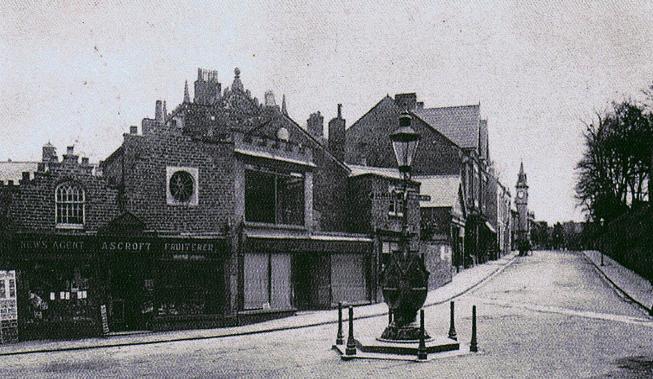





The above pictures shows old Bebington village, which is a far cry from how it looks now. The Mayer
Hall and the Rose and Crown inn are two of the few buildings that have remained unchanged over
the years. The Rose & Crown inn actually dates back to 1733. It is also believed to have been built
over the site of an older inn the name of which is unknown but is believed to date back to the time of
the late 1500’s. A superbly detailed fountain stood in the middle of Bebington Village until it moved to
Mayer Park in 1905. The fountain was donated in 1863 by Charles Hill who lived at the “Oaklands”.
The fountain can be seen in the centre of the picture above. The wall on the right hand side runs
along the road and surrounds Old Bebington Hall. Click the menu on the left hand side for more
information.
Kirkett Lane, formally known as Roman Road, was created in the 12th century when it was used to
transport stone from Storeton quarry to St Andrews Church. The lane continued to be used as a foot
path and as a lane for which the farmers could drive down there live stock. The Roman road and
surrounds fields including Abbots Grange eventually succumb to urban growth and was swallowed up
by urban regeneration and housing stock. Although the road was always known as Roman Road it
clearly had nothing to do with the Romans as they had long since left our shores, if anything it should
have been known as Norman Road !
Hall and the Rose and Crown inn are two of the few buildings that have remained unchanged over
the years. The Rose & Crown inn actually dates back to 1733. It is also believed to have been built
over the site of an older inn the name of which is unknown but is believed to date back to the time of
the late 1500’s. A superbly detailed fountain stood in the middle of Bebington Village until it moved to
Mayer Park in 1905. The fountain was donated in 1863 by Charles Hill who lived at the “Oaklands”.
The fountain can be seen in the centre of the picture above. The wall on the right hand side runs
along the road and surrounds Old Bebington Hall. Click the menu on the left hand side for more
information.
Kirkett Lane, formally known as Roman Road, was created in the 12th century when it was used to
transport stone from Storeton quarry to St Andrews Church. The lane continued to be used as a foot
path and as a lane for which the farmers could drive down there live stock. The Roman road and
surrounds fields including Abbots Grange eventually succumb to urban growth and was swallowed up
by urban regeneration and housing stock. Although the road was always known as Roman Road it
clearly had nothing to do with the Romans as they had long since left our shores, if anything it should
have been known as Norman Road !

Some grand houses of Bebington village that have been demolished to make way for new housing
include houses such as “Richmond Hill”, “Wellington Park” and the “Oaklands”. Some of the street
names in Bebington now reflect these old hosues. These include Richmond Road and Richmond Close,
Wellington Road, Parkside Road and Parkside Close, and Stonehill Avenue.
include houses such as “Richmond Hill”, “Wellington Park” and the “Oaklands”. Some of the street
names in Bebington now reflect these old hosues. These include Richmond Road and Richmond Close,
Wellington Road, Parkside Road and Parkside Close, and Stonehill Avenue.




| MENU |
